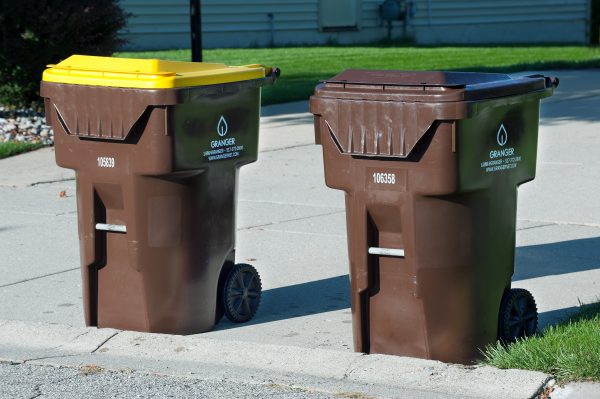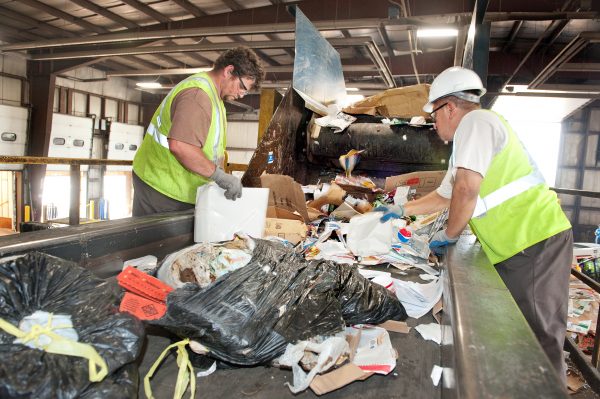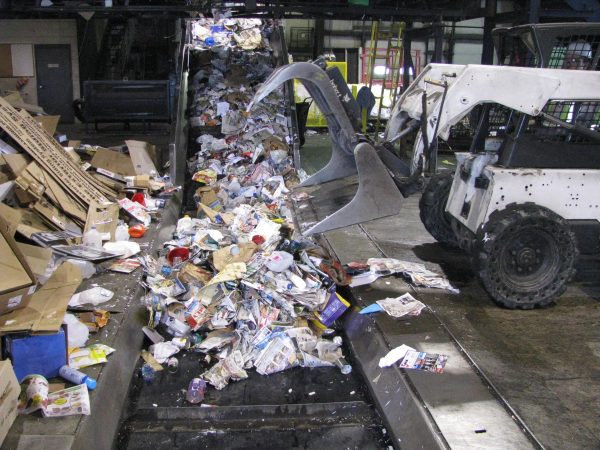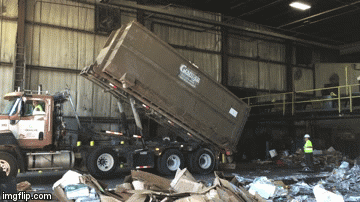If you’re a committed recycler, you probably spend a lot of time and effort on your recycling. You have the routine down—empty, rinse, repeat. You nag your kids when you see them throwing something away that can go in the recycling. (Or maybe they nag you.) If you’re taking your recycling to a drop-off center instead of having it picked up at your home in a single-stream collection, you have to sort it, too. Your garage might be full of separate recycling containers, all nicely sorted and just waiting to get full.
Now you probably don’t mind doing any of that because you know it’s important. But once that recycling gets put in a Granger recycling truck or in a container at the recycling drop-off, you kind of lose track of it. The big question is, what happens after that?
Step 1—Collection

This is probably the last part of recycling where you’re still in the picture. You put your recycling in your cart or tub and a Granger driver collects all the material together and loads it into a compacting recycling truck. If you don’t have collection at your home, you say goodbye to your recycling at the drop-off center when you place it gently in the proper container.
Step 2—Unloading
A Granger truck drives onto the floor of the Recycling Center and recyclable materials are unloaded from the back of the truck or container (shown above). This looks pretty cool in person and the plastic and metal make some pretty satisfying noises when they fall on the floor. (Want to check it out in person? Request a tour here.) The door of the truck or container is opened, the bed is raised and everything slides out. Sometimes the driver has to drive back and forth a bit to shake everything out.
Step 3—Sorting

The sorting done by Granger is minimal and basically involves removing trash. (You wouldn’t believe some of the crazy things that make it into a recycling container. Yikes!) Loads that contain a lot of trash are pushed onto a conveyor belt that goes across a catwalk where workers separate the recyclable materials from the trash.
Step 4—Baling

Equipment operators push the recyclables onto a conveyor belt using a Bobcat. (Our operators are really good at driving Bobcats. They can pick up the tiniest things and move them around the recycling floor. It’s nothing short of amazing.)

Once the material is on the belt, it travels into a baler, where it is smashed into a big block and wrapped in metal bands that help keep it together. Single-stream materials still aren’t separated at this point—all the plastic, newspaper, tin cans and other items hang out together in one bale. Materials from drop-off centers, however, remain separated. There are big bales containing only cardboard, boxboard, plastic, tin and aluminum and newspapers and magazines.
Step 5—Storage

Baled material sticks around the Recycling Center, either on the recycling floor, outside the building or in the trailer of a semi-truck, until we have a full load. Then the material is trucked to an intermediate processor.
Want to find out what happens to your recycling once it makes its way to the intermediate processor? Click here.
Recommended Read: Where in the World Does Your Recycling Go? (Part 2)
Related Blog Posts
- Drop That Pizza Box! Surprising Things That Can’t Be Recycled—And Why
- Make room for back to school shopping—recycle your old clothes and shoes at Granger

